#project monitoring software
Explore tagged Tumblr posts
Text

Revolutionizing Project Management with the Project Monitoring Portal
In the dynamic world of project management, staying on top of every aspect of a project is crucial for success. The Project Monitoring Portal, powered by PPMS Software, offers a comprehensive solution for managing the entire project lifecycle with unparalleled efficiency and precision. From smarter planning to real-time progress tracking, this web-based application is designed to streamline project management processes, ensuring projects are completed on time and within budget.
https://www.cyberswift.com/in/products/csr-management-software
#it based project monitoring system#project monitoring system#progress monitoring system#work progress monitoring system#project progress monitoring system#web based project monitoring system#project monitoring software#best project tracking softask tracking system#engineering project tracking software#project tracking system#project management software with time tracking#construction project tracking software#tool tracking system for construction#time and project tracking software#simple project tracking software#project management tool with time tracking
0 notes
Text
Top 10 Benefits of Employee Screen Monitoring for Businesses in 2025
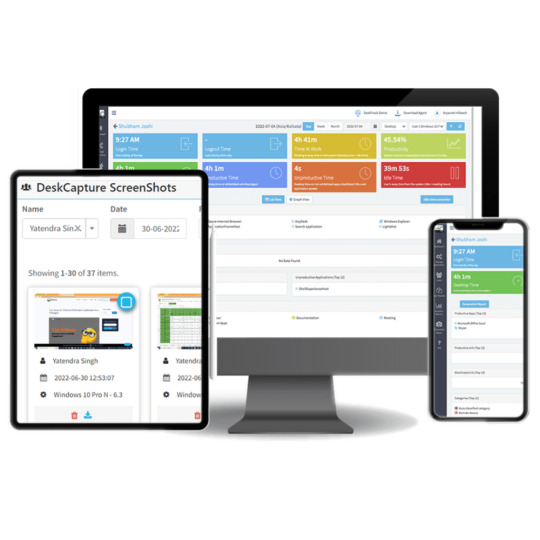
In the rapidly evolving business landscape of 2025, employee screen monitoring has become a critical tool for organizations striving to enhance productivity, security, and overall operational efficiency. As companies embrace remote work and hybrid models, the need for effective monitoring software has never been greater. Here are the top 10 benefits of employee screen monitoring software for businesses in 2025.
1. Improved Productivity
One of the most significant benefits of employee screen monitoring software is its ability to improve productivity. By tracking employees' activities in real-time, employers can gain valuable insights into how time is being spent during work hours. Monitoring tools can identify time-wasting activities, such as excessive social media use, and help employees stay focused on their tasks. With detailed reports on activity, managers can provide constructive feedback and make necessary adjustments to optimize workflow. This leads to greater efficiency and higher output across the organization.

2. Enhanced Security
With increasing cybersecurity threats, especially in remote work settings, employee screen monitoring software plays a vital role in safeguarding sensitive business data. The software can monitor for unauthorized access, detect unusual activity, and flag potential security breaches in real-time. By identifying suspicious behavior, businesses can prevent data leaks, hacking attempts, and internal threats, ensuring that sensitive company information remains protected. This layer of security is especially crucial as businesses continue to store and manage sensitive data online.
3. Better Time Management
Employee screen monitoring can also help employees better manage their time. By analyzing their activity patterns, both employees and managers can identify areas where time is being wasted or inefficiently used. Whether it's spending too much time on non-work-related websites or procrastinating, screen monitoring can serve as a wake-up call for employees to manage their time more effectively. With regular reports and insights, businesses can foster a culture of accountability where employees take ownership of their work habits and strive to improve them.
4. Real-Time Activity Tracking
Employee screen monitoring tools offer the advantage of real-time tracking, allowing managers to oversee employees’ activities as they happen. This is particularly useful in managing remote teams, as it provides employers with an accurate view of what their employees are working on during office hours. With real-time monitoring, businesses can quickly identify potential issues and address them before they escalate. This immediate feedback loop ensures that employees stay on task and can improve overall efficiency.
5. Increased Accountability
Accountability is a cornerstone of high-performing teams. Employee screen monitoring fosters a culture of transparency and accountability by providing clear, objective data on each employee’s activities. When employees know their screens are being monitored, they are more likely to stay focused and avoid distractions. This sense of responsibility encourages employees to manage their time wisely and perform their duties with a higher level of diligence. It also gives managers a fair and unbiased method of evaluating employee performance.
Read More: Which Industries Benefit the Most from Time Tracking Software?
6. Data-Driven Insights for Better Decision-Making
Employee screen monitoring software provides data that businesses can leverage to make informed decisions about workflows, staffing needs, and process optimization. By analyzing productivity data, businesses can identify trends and patterns that might not be obvious through traditional methods. For example, if certain employees are consistently more productive than others, managers can examine their work habits and replicate successful strategies across the team. Additionally, data-driven insights can help managers assess whether existing workflows are optimal or require adjustments to improve efficiency.

7. Compliance with Legal and Regulatory Requirements
In some industries, businesses are required to comply with specific legal and regulatory standards that dictate how employee data is managed and protected. Employee screen monitoring software can help businesses meet these compliance requirements by providing detailed logs of employee activity. This can be especially crucial in sectors like finance, healthcare, and legal services, where compliance is not just a good practice but a legal obligation. By maintaining a secure and accurate record of employee activities, businesses can demonstrate that they are in line with industry regulations and avoid potential legal penalties.
8. Remote Team Management
Managing remote teams can be challenging, especially when employees work from different locations and time zones. Employee screen monitoring software provides a way to bridge this gap by offering visibility into what remote workers are doing. Managers can use monitoring data to check if employees are following the right processes and staying on task, even when they’re not physically present. This added layer of oversight helps build trust between remote employees and managers while ensuring that the business's goals are being met, regardless of the team’s physical location.
9. Reduced Employee Misconduct
Employee screen monitoring software can act as a deterrent to misconduct and inappropriate behavior in the workplace. Knowing that their activities are being monitored discourages employees from engaging in activities that are detrimental to the organization, such as accessing inappropriate websites, stealing company data, or engaging in unethical conduct. This proactive approach helps businesses maintain a professional and ethical environment, leading to a more positive organizational culture.
Read More: Top 15 Best QuickBooks Time Alternatives in 2025
10. Improved Customer Service
Finally, employee screen monitoring can indirectly improve customer service. By ensuring employees are using their time efficiently, businesses can ensure that customer-facing teams are more responsive and focused on their tasks. Monitoring can help identify areas where employees may be struggling or spending too much time on non-essential tasks, allowing businesses to provide better training and support. In turn, this leads to faster response times, higher-quality service, and more satisfied customers.
Conclusion
Employee screen monitoring software offers a range of benefits for businesses looking to enhance productivity, security, and overall operational efficiency in 2025. From boosting time management and accountability to improving data security and remote team management, the advantages are clear. As companies continue to adapt to the challenges of a more digitally connected workforce, employee screen monitoring will play an essential role in optimizing performance and ensuring business success in the years to come. By investing in the right monitoring tools, businesses can create a more productive, secure, and accountable workplace that benefits both employers and employees.
#software#time tracking software#monitoring software#employee monitoring system#employee monitoring software india#employee monitoring software#project time management#best employee monitoring software in india
0 notes
Text
Benefits of Implementing ERP Software for Engineering Firms

The engineering industry is one of the biggest industries in the world, and it plays an important role in growing the economy as well. The engineering sector is growing day by day and is highly competitive. Hence, efficiency, accuracy, and streamlined operations are crucial for success in this sector. Businesses face several challenges in this sector, like the complexities of a project, resource management, and deadline restrictions. ERP software for engineering firms is the best way to overcome all of these challenges as it integrates and automates business processes.
Here is the list of top benefits of utilizing ERP systems for the engineering industry:
1. Project Management:
The projects in engineering sectors have a detailed documentation process, different teams, and complicated workflows. ERP system for engineering firms help in various ways, like centralizing project data, enabling limitless collaboration, and getting real-time updates. Because of this software, every team member has all the updates, which in turn reduces miscommunication and delays in the project.
2. Resource Management:
For all engineering projects, it is essential to allocate all resources carefully, like equipment, materials, and labor. With the utilization of ERP software, the monitoring of resources can be performed easily. It helps in checking resource availability, optimizing usage, and forecasting requirements. This ultimately results in improving cost efficiency.
3. Quality Management:
Ensures engineering projects meet industry standards and regulations.
Quality Control: Offers tools for monitoring and managing the quality of materials, processes, and completed projects.
4. Data Management:
Using ERP software, engineering firms can make sure that they can get a unified database to eliminate data silos and ensure consistency through all departments. A centralized data management system is beneficial for decision-making as well it provides critical information when required.
5. Time and Budget Management:
When the whole system gets automated with ERP software, it reduces time and cost on repetitive tasks like data entry, procurement, and inventory management. The utilization of ERP systems in engineering firms helps in reducing manual errors and improving productivity. Hence, the firms can focus on other important things like innovation and project execution.
6. Client Relationship Management:
Most ERP systems include customer relationship management tools that are very helpful in managing client interactions. This tool allows the firm to track communication history, project milestones, and client preferences. Because of this feature, firms can improve customer satisfaction and build long-term relationships.
7. Scalability and Flexibility
ERP solutions may scale with the company as it grows, allowing for more projects, clients, and resources. Customization: ERP solutions can typically be tailored to an engineering firm’s specific demands and operations.
8. Financial Management
Accounting combines financial accounting with project management to provide a complete picture of the company’s financial health. Reporting: Creates detailed financial reports, such as profit and loss statements, balance sheets, and cash flow statements.
How PMTRACK ERP Helps:
Managing development processes, monitoring complex projects, and ensuring seamless collaboration across divisions are becoming increasingly important for company success. Engineering organizations in Pune, India, and around the world have distinct issues in successfully managing their operations.
Implementing a bespoke Enterprise Resource Planning (ERP) solution provides transformative benefits by streamlining processes, improving project management, and ultimately generating profitability.
For businesses considering ERP adoption, selecting the correct ERP software vendor is critical. PMTRACK ERP, a reputable ERP solution provider in Pune, India, specializes in engineering ERP systems tailored to the demands of engineering and manufacturing companies.
ERP software is used to connect project management with financial accounting, inventory control, and procurement procedures. This integration gives project managers real-time information about project costs, resource availability, and schedules, resulting in better-informed decisions and more effective project execution.
Engineering firms that use an ERP system can improve operational efficiency, reduce costs, improve project delivery, and ultimately boost client satisfaction and profitability.
Summary:
ERP software provides several advantages to engineering firms in Pune, India, ranging from better project management and financial control to higher client satisfaction and scalability. Engineering organizations can employ a comprehensive ERP solution to improve operations, decrease inefficiencies, and drive long-term growth.
PMTRACK ERP, one of the leading ERP solution providers in Pune, India, provides comprehensive, industry-specific ERP solutions that are suitable for engineering organizations’ unique requirements. Firms that collaborate with an experienced engineering ERP software company in India receive a trusted partner in negotiating the complexity of their business, setting them up for success in an increasingly competitive landscape.
#efficiency#accuracy#and streamlined operations are crucial for success in this sector. Businesses face several challenges in this sector#like the complexities of a project#resource management#Here is the list of top benefits of utilizing ERP systems for the engineering industry:#1. Project Management:#The projects in engineering sectors have a detailed documentation process#different teams#and complicated workflows. ERP system for engineering firms help in various ways#like centralizing project data#enabling limitless collaboration#and getting real-time updates. Because of this software#every team member has all the updates#which in turn reduces miscommunication and delays in the project.#2. Resource Management:#For all engineering projects#it is essential to allocate all resources carefully#like equipment#materials#and labor. With the utilization of ERP software#the monitoring of resources can be performed easily. It helps in checking resource availability#optimizing usage#and forecasting requirements. This ultimately results in improving cost efficiency.#3. Quality Management:#Ensures engineering projects meet industry standards and regulations.#processes#and completed projects.#4. Data Management:#Using ERP software
0 notes
Text
What is Site Remediation?
Site remediation is the process of cleaning up contaminated land to restore it for safe use. This often involves identifying pollutants, assessing their impact on the environment and implementing strategies to remove or contain them. Common contaminants include heavy metals, petroleum products and hazardous chemicals, typically resulting from industrial activities, waste disposal or accidental spills.
Importance of Site Remediation
The significance of site remediation cannot be overstated. Contaminated sites can pose severe health risks to communities, wildlife and ecosystems. By remediating these areas, we not only protect public health but also enhance property values and promote sustainable land use. Moreover, remediated sites can be transformed into parks, commercial properties or residential areas, contributing to economic revitalization.
To facilitate effective remediation, environmental consulting firms often rely on advanced technologies and methodologies. One essential tool in this process is a remediation data system for environmental consulting. These systems enable professionals to collect, analyze and manage data related to contamination, ensuring that remediation efforts are well-informed and efficient. By utilizing such systems, consultants can track progress, assess the effectiveness of remediation strategies and comply with regulatory requirements.
Techniques Used in Site Remediation
There are several techniques employed in site remediation, including excavation, bioremediation and chemical treatment. Excavation involves physically removing contaminated soil, while bioremediation uses microorganisms to break down pollutants. Chemical treatments may involve neutralizing contaminants or using agents that bind to them, preventing their spread.
In conclusion, site remediation is a critical process aimed at restoring contaminated land to safe and usable conditions. The use of a remediation data system for environmental consulting plays a vital role in ensuring that these efforts are effective, sustainable and compliant with environmental regulations. Through careful assessment and innovative remediation techniques, we can protect our environment and improve community health.
Read a similar article about wind and solar asset management here at this page.
#environmental monitoring data platform#environmental site assessment project management software#platform for vegetation project management
0 notes
Text
Software to track time spent on projects
These tools help teams focus on tasks, avoid time wastage, and provide transparency in project management. For project-based billing, they ensure accuracy, streamline invoicing, and maintain client trust. Software to track time spent on projects is essential for managing productivity, allocating resources effectively, and ensuring accurate billing or reporting. Here are some excellent options:
#project 2025#employee monitoring software#work from home tracking software#employee time tracking software
0 notes
Text
Jayson Murphy IT service

Website: http://jaysonmurphyitservicer.com/
Address: 609 New York Ave, Brooklyn, NY 11203, USA
Phone: 917-577-3337
Jayson Murphy IT Service is a comprehensive provider of managed IT solutions tailored to meet the unique needs of businesses. With a focus on enhancing operational efficiency and ensuring robust cybersecurity, we offer a range of services including network management, cloud solutions, data backup, and IT consulting. Our team of experienced professionals is dedicated to delivering reliable support and innovative technology strategies that empower organizations to thrive in a digital landscape. At Jayson Murphy IT Service, we prioritize customer satisfaction and work closely with our clients to develop customized solutions that drive growth and success.
Business Email: [email protected]
Facebook: https://facebook.com/abdulmanufacturerlimited
Twitter: https://twitter.com/abdulmanufacturerlimited
Instagram: https://instagram.com/abdulmanufacturerlimited
TikTok: https://tiktok.com/@abdulmanufacturerl
#IT services#Managed IT services#IT support#IT consulting#Technology solutions#IT staff training#Cybersecurity training#Software training workshops#Technology bootcamps#IT certification programs#Custom software development#E-commerce solutions#CRM implementation#Workflow automation solutions#Digital transformation services#IT performance monitoring#Network monitoring tools#Application performance analysis#IT health checks#Data analytics services#Brooklyn NY IT services#IT support in Brooklyn NY#Managed IT services Brooklyn NY#Cybersecurity Brooklyn NY#IT consulting Brooklyn NY#Remote work solutions#Team collaboration tools#Video conferencing solutions#Unified communication systems#Project management software
1 note
·
View note
Text
Benefits of Utilizing Employee Monitoring Software For Project Management
Remote work environments have become a common trend and are expected to continue for years. They offer a range of benefits to employees and employers but also bring challenges, especially with remote project management. To address this concern, TrackOlap provides a centralized solution like a remote work management system that tracks activities, extracts accurate data in real-time, and strives to streamline diverse workflows.
Managing projects from varied departments can be daunting, primarily if your organization collaborates with contract-based employees for specific projects. You may find yourself perplexed amid varied deadlines, managing communication with the team, reviewing tasks, and ensuring productivity with improved output. However, features like streamlined timesheets, task assignments, and approval process of project management software India can help businesses manage diverse projects seamlessly.
Remote project management is often called a chaotic procedure, though it doesn't always have to be like that! Continuous tracking, proper planning through data-driven insights, and a cost estimation plan through an employee time tracker can simplify the rate of task completion with accuracy without juggling between procedures.
Do you want to know more about project management with remote employees? You’ve come to the right place! In this blog, we will discuss varied aspects of remote work management software and its impact on project success.
Benefits of Utilizing Employee Monitoring Software For Project Management
Integrating employee monitoring software into your system to seamlessly manage varied projects can be one of the best decisions. From tracking employees' activities in real time to streamlining processes, simplifying project-based communications with a team, and providing a dedicated timesheet, this application simplifies workflow to manage diverse projects. It effectively enhances the rate of project success.
1. Enhances Productivity & Accountability
The remote tracking tool aids in understanding what employees are working on and the average time they spend completing a particular task. This enables managers to identify inefficiencies and prepare an accurate timesheet for every employee based on the project requirements. This will ensure that employees stay focused and productive to make the project successful.
2. Advanced Project Tracking and Management
The remote work management software allows managers to closely monitor project progress, deadlines, and employee progress with specific tasks through time and activity tracking. This aids managers in understanding the project's progress and re-adjusting task assignments or guiding employees accordingly with better project planning.
3. Detailed Project Overview
If you work with an external team and in-house employees, assigning accurate tasks, following up with task progress, and tracking their activities or productivity can be complicated. However, an employee time tracker assists managers in keeping a record of varied progress through a centralized dashboard that helps identify updates on tasks and highlights factors that need to be worked on within a timeframe.
4. Save Overall Project Cost
Project management software India helps identify the overall cost required to complete tasks at your fingertips. However, by identifying areas of excessive expenses and optimizing resource allocation correctly, TrackOlap’s tools can help businesses cut costs with streamlined project planning.
5. Optimized Resource Allocation
Accessing insights and data-driven reports on factors like the effectiveness of previous project planning, the productivity levels of your team, and performance evaluation from TrackOlap can help managers identify bottlenecks and reallocate resources effectively to maximize successful project completion.
How to Create a Project Plan with Project Management Software India?
Are you struggling to improve project planning with your remote workforce? A centralized platform like employee monitoring software can help you gain visibility to remote projects, accurately assign tasks, and streamline employees' procedures to boost efficiency with simple steps.
To help you develop a robust procedure for seamless project management, we are listing a few factors for your better understanding.
Identify essential tasks: Before you assign tasks to your employees, consider breaking down a project into manageable tasks. Remember to attach clear goals, expectations, milestones, and a timeframe to it.
Allocate resources with a well-thought-out plan: Utilize TrackOlap’s software to conduct a thorough evaluation of previous project results, focusing on aspects like employees' work efficiency, overall output delivery, strengths and weaknesses, ability to work with short deadlines, and overall performance. Based on these factors, consider allocating tasks for maximum outcome.
Mitigate Risks: When breaking down tasks, consider evaluating risk with potential strategy and identifying suitable solutions to meet risks in order to offer quality services to the client.
Follow open communication: When strategizing for project management , ensure that you communicate with your team members about the objective and client expectations. Keep everyone on the same page with sudden changes in the plan to maintain transparency. Allow room for two-way feedback and suggestions for fostering open communication.
Use Collaboration Features: Rely on Tracklop's centralized communication tool or features like virtual meetings to facilitate effortless communication among remote team members. This will eliminate the chances of misunderstanding, which may lead to unwanted repetition of work.
You May Also Like: How to Automate Operations via Field Force Tracking?
Tips on Simplified Project Management with Employee Monitoring Software
After understanding the benefits and essential factors, you must be wondering how I can manage varied projects simultaneously and enhance success rates. We understand your concern. Hence, we are listing a few factors that will help you to improve project planning.
1. Set Clutter-free Project Goals and Expectations
Open communication and developing a culture of transparency can resolve the most common challenges with remote project management. However, to successfully plan a smooth project, your team members must be on the same page, which means they need to know the project's goal, expectations, mission, and purpose.
To communicate a specific project’s goals and expectations with your team, consider defining a few questions to eliminate chances of misunderstanding and to kick-start the process effectively.
How can the team communicate for clarification?
Who is accountable for reviewing varied tasks?
What is the expected outcome of the project?
What are the priorities and timeline of the project?
What is the specific time for discussion over virtual meetings for project-based communication?
Clarifying these and other aspects (depending on your project requirements) upfront will ensure every team member is aligned with the project and will streamline the procedure.
2. Provide Clear Feedbacks to Remote Workforce
While remote work management software streamlines timesheets, task delegation, progress tracking, and efficiency tracking, managers must frequently provide clear and direct feedback to team members to ensure they make changes according to the requirements and avoid last-minute hassles.
Consider defining goals, expectations, and specific guidelines for the task every time you delegate tasks to your remote employees. This will ensure they deliver quality work, submit tasks on time, and avoid the process of back-and-forth changes.
Conduct a feedback session after every task submission to speed up the responsive time and enable employees to work on the next tasks stress-free.
When required, collaborate with the client to help them understand expectations directly and share ideas directly with the client to enhance the effectiveness of the project.
Consider providing constructive feedback to help employees know where they are going wrong and identify areas of improvement.
In some cases, cross-team collaboration for detailed brainstorming is fostered to offer qualitative innovation.
3. Review Project’s Progress Frequently
While the time tracking app offers timely insights into organizations with project details, managers must ensure that they keep a check on task progress to avoid unexpected delays, re-align tasks, offer guidelines to employees whenever they need them, identify drawbacks, and take appropriate action.
To access the project’s progress, you can set alerts on specific parameters such as deadline date and more factors. Or you can check the centralized dashboard to acquire oversight details of projects seamlessly. By implementing this approach, managers can ensure the current strategy meets the initial project objective. If there is any inefficiency during the process, they can figure out a suitable solution before it's too late to think of anything.
Final Takeaway
A centralized platform like remote work management software is one effective way to manage varied projects simultaneously without constantly juggling dispersed details. Through this software, organizations can easily structure the project process, collect data in real time on progress, analyze with oversight, and make changes on the spot to maximize outcomes.
Do you want to know more about TrackOlap’s Project Management Solution ? Get in touch with our team or ask for a demo right away!
#employee tracking app#employee tracking#employee time tracking#employee tracking software#employee monitoring software#employee time tracking software#business automation software#project management system#project management software#project management tool#sales productivity
0 notes
Text
IoT Development; A Complete Guide, on Bringing Devices from Idea to Implementation
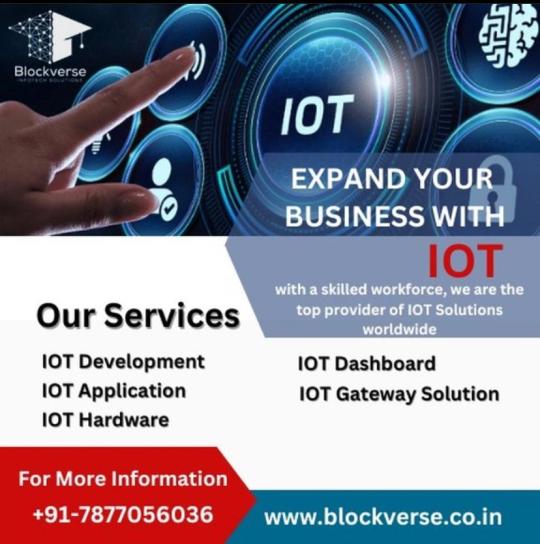
In todays paced tech world, the Internet of Things (IoT) has emerged as a game changer transforming the way we engage with our environment. At Blockverse Infotech Solutions we recognize the power of devices providing customized solutions to bring ideas to life and seamlessly integrate them into the digital realm.
The Internet of Things (IoT) has evolved from a buzzword to an aspect of contemporary technology influencing various facets of our everyday routines. From homes and wearable gadgets to automation and healthcare systems IoT enables us to connect and empower ourselves like never before. However transitioning from conceptualization to implementation of solutions can be overwhelming without guidance.
Conceptualization marks the phase, in IoT development. It entails identifying the problem or opportunity that can be addressed through technology and envisioning how interconnected devices can improve efficiency, convenience or safety. At Blockverse Infotech Solutions we work closely with clients to brainstorm ideas grasp their needs and devise IoT solutions tailored specifically for them.
Once the concept is solidified, the development phase begins. This involves designing and prototyping IoT devices, selecting appropriate sensors and connectivity protocols, and developing the software infrastructure to collect, analyze, and act upon data generated by the devices. Our team of skilled developers and engineers at Blockverse Infotech Solutions leverages cutting-edge technologies to build robust and scalable IoT solutions that meet the highest standards of performance and reliability.
Testing and validation are integral parts of the development process, ensuring that IoT devices function as intended and deliver the desired outcomes. Through rigorous testing procedures and simulation environments, we identify and rectify any issues or vulnerabilities, ensuring that the deployed IoT solutions operate seamlessly in real-world scenarios.
Deployment marks the culmination of the IoT development journey, as the solutions are implemented and integrated into existing systems or environments. From device provisioning and network configuration to data management and security protocols, our experts at Blockverse Infotech Solutions handle every aspect of the deployment process with precision and care, ensuring a smooth transition from development to operation.
Post-deployment support and maintenance are essential for ensuring the long-term success and sustainability of IoT solutions. At Blockverse Infotech Solutions, we offer comprehensive support services, including monitoring, troubleshooting, and software updates, to keep IoT devices running smoothly and efficiently.
In conclusion, navigating the complex landscape of IoT development requires expertise, innovation, and a comprehensive understanding of the technology. With Blockverse Infotech Solutions providing tailored solutions for IoT devices, businesses and organizations can embark on their IoT journey with confidence, knowing that they have a trusted partner to guide them from concept to deployment and beyond.
#internet of things#iot#iot devices#iot projects#iot applications#iot development company#iot device management software#embedded system design#iot device management app#embedded operating system#iot monitoring software#embedded systems#what is embedded system
0 notes
Text
Driving Innovation: A Case Study on DevOps Implementation in BFSI Domain
Banking, Financial Services, and Insurance (BFSI), technology plays a pivotal role in driving innovation, efficiency, and customer satisfaction. However, for one BFSI company, the journey toward digital excellence was fraught with challenges in its software development and maintenance processes. With a diverse portfolio of applications and a significant portion outsourced to external vendors, the company grappled with inefficiencies that threatened its operational agility and competitiveness. Identified within this portfolio were 15 core applications deemed critical to the company’s operations, highlighting the urgency for transformative action.
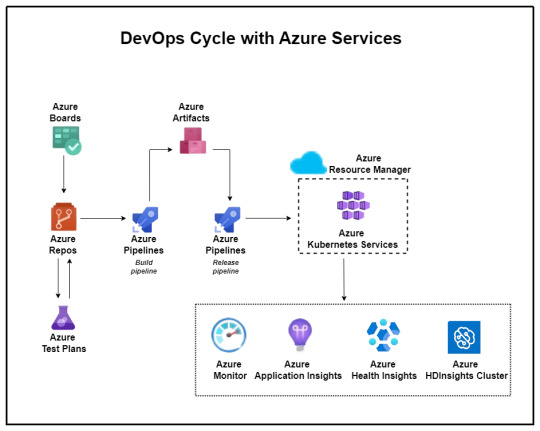
Aspirations for the Future:
Looking ahead, the company envisioned a future state characterized by the establishment of a matured DevSecOps environment. This encompassed several key objectives:
Near-zero Touch Pipeline: Automating product development processes for infrastructure provisioning, application builds, deployments, and configuration changes.
Matured Source-code Management: Implementing robust source-code management processes, complete with review gates, to uphold quality standards.
Defined and Repeatable Release Process: Instituting a standardized release process fortified with quality and security gates to minimize deployment failures and bug leakage.
Modernization: Embracing the latest technological advancements to drive innovation and efficiency.
Common Processes Among Vendors: Establishing standardized processes to enhance understanding and control over the software development lifecycle (SDLC) across different vendors.
Challenges Along the Way:
The path to realizing this vision was beset with challenges, including:
Lack of Source Code Management
Absence of Documentation
Lack of Common Processes
Missing CI/CD and Automated Testing
No Branching and Merging Strategy
Inconsistent Sprint Execution
These challenges collectively hindered the company’s ability to achieve optimal software development, maintenance, and deployment processes. They underscored the critical need for foundational practices such as source code management, documentation, and standardized processes to be addressed comprehensively.
Proposed Solutions:
To overcome these obstacles and pave the way for transformation, the company proposed a phased implementation approach:
Stage 1: Implement Basic DevOps: Commencing with the implementation of fundamental DevOps practices, including source code management and CI/CD processes, for a select group of applications.
Stage 2: Modernization: Progressing towards a more advanced stage involving microservices architecture, test automation, security enhancements, and comprehensive monitoring.
To Expand Your Awareness: https://devopsenabler.com/contact-us
Injecting Security into the SDLC:
Recognizing the paramount importance of security, dedicated measures were introduced to fortify the software development lifecycle. These encompassed:
Security by Design
Secure Coding Practices
Static and Dynamic Application Security Testing (SAST/DAST)
Software Component Analysis
Security Operations
Realizing the Outcomes:
The proposed solution yielded promising outcomes aligned closely with the company’s future aspirations. Leveraging Microsoft Azure’s DevOps capabilities, the company witnessed:
Establishment of common processes and enhanced visibility across different vendors.
Implementation of Azure DevOps for organized version control, sprint planning, and streamlined workflows.
Automation of builds, deployments, and infrastructure provisioning through Azure Pipelines and Automation.
Improved code quality, security, and release management processes.
Transition to microservices architecture and comprehensive monitoring using Azure services.
The BFSI company embarked on a transformative journey towards establishing a matured DevSecOps environment. This journey, marked by challenges and triumphs, underscores the critical importance of innovation and adaptability in today’s rapidly evolving technological landscape. As the company continues to evolve and innovate, the adoption of DevSecOps principles will serve as a cornerstone in driving efficiency, security, and ultimately, the delivery of superior customer experiences in the dynamic realm of BFSI.
Contact Information:
Phone: 080-28473200 / +91 8880 38 18 58
Email: [email protected]
Address: DevOps Enabler & Co, 2nd Floor, F86 Building, ITI Limited, Doorvaninagar, Bangalore 560016.
#BFSI#DevSecOps#software development#maintenance#technology stack#source code management#CI/CD#automated testing#DevOps#microservices#security#Azure DevOps#infrastructure as code#ARM templates#code quality#release management#Kubernetes#testing automation#monitoring#security incident response#project management#agile methodology#software engineering
0 notes
Text
Azure Consulting: Tailored Solutions for You | FYI Solutions
Azure consulting that adapts to your needs. Navigate the complexities of cloud computing with our expertise, ensuring your success in every endeavor. Visit Today https://fyisolutions.com

#network monitoring services#project management services#software testing services#application development services in usa#cloud services in usa#mobile app development company in usa#staff augmentation services
0 notes
Text
Revolutionising Road Construction with Technology: Enhancing Project Management for a Smarter Future
The road construction industry plays a vital role in shaping modern infrastructure, driving economic growth, and ensuring efficient transportation networks. However, it faces persistent challenges, including project delays, safety risks, cost overruns, and inefficient resource management. As construction projects grow in complexity, the need for innovative solutions to boost productivity and efficiency has never been more critical.
Learn more https://www.cyberswift.com/blog/revolutionising-road-construction-with-technology-enhancing-project-management-for-a-smarter-future/
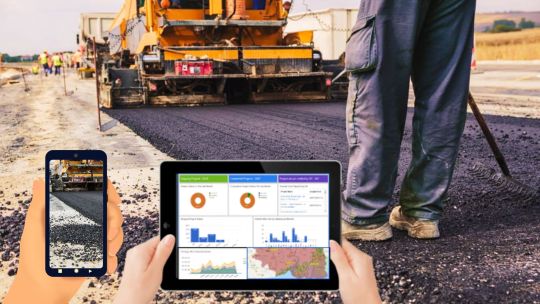
#road construction monitoring software#road project tracking system#csrmonitoringsoftware#road construction progress tracking#gis based road monitoring system#road construction management software#real time road project monitoring#road construction tracking application#construction project tracking system#road project progress monitoring#road asset management software#road construction analytics tools#road infrastructure monitoring system#construction monitoring software for roads#road project planning software#digital road project monitoring system#smart road monitoring solutions#road construction quality monitoring#road project performance tracking#road mapping and monitoring software
0 notes
Text
📊 AV Project Managers, Still Stuck in the Age of Traditional Project Management? 🕰️
Managing AV projects the old-fashioned way can feel like swimming against the tide. Endless paperwork, communication gaps, and missed deadlines - it's a real struggle. But here's the good news: You're not alone, and there's a solution.
Our latest blog post is your guide to modernize AV project management: 🚀 Explore how traditional methods can hold you back. 📈 Discover the benefits of embracing modern techniques. 🛠️ Learn how to make your AV projects more efficient and less stressful.
Read the blog post now - it's your ticket to breaking free from outdated practices:
Because in the world of AV, staying ahead of the curve is the key. Share this post to help your fellow project managers embrace progress! 💼🎥
#audio visual#av technology#design#av design#av industry#av#software#AV Project Management#project management#av project management software#audio visual project manager#av project manager#audio video project manager#av management software#av project life cycle#audiovisual management solutions#av monitoring software#audio visual planning#project handling#av projects#project managers#projects
0 notes
Text
Mastering Employee Productivity through Effective Time Tracking
In today's fast-paced business landscape, maximizing employee productivity is a crucial factor for organizational success. The ability to efficiently manage time, tasks, and responsibilities can significantly impact a company's bottom line. One of the most powerful tools at your disposal for achieving this is employee time tracking. By implementing a comprehensive time tracking system, businesses can gain insights into employee work patterns, identify bottlenecks, and create strategies to boost overall productivity.
The Importance of Employee Productivity
Employee productivity directly influences the efficiency and profitability of an organization. It's not just about getting more work done; it's about accomplishing tasks with precision, meeting deadlines consistently, and fostering a culture of continuous improvement. High productivity levels lead to increased employee morale, better customer satisfaction, and improved innovation.
Understanding Employee Time Tracking
Employee time tracking involves monitoring the hours employees spend on various tasks and projects. It goes beyond mere clocking in and out—it's about tracking the distribution of time across different activities to identify where inefficiencies lie. Modern time tracking tools offer a range of features, including project-specific tracking, task categorization, and even automated time capture.
Benefits of Employee Time Tracking
Data-Driven Insights: Time tracking generates valuable data that provides insights into how employees allocate their time. This data can be analyzed to understand which tasks take longer than expected, where time is being wasted, and which projects yield the best results.
Resource Allocation: By analyzing time tracking data, managers can make informed decisions about allocating resources. They can distribute tasks according to team members' strengths, balance workloads, and prevent burnout.
Accurate Project Estimates: Time tracking helps in creating more accurate project estimates for future tasks. This is especially useful for client-facing projects where meeting deadlines is crucial.
Identifying Bottlenecks: Through time tracking, bottlenecks and workflow disruptions become evident. This allows managers to redesign processes and eliminate obstacles that hinder productivity.
Performance Evaluation: Time tracking data provides a fair and objective basis for evaluating employee performance. Recognizing top performers becomes easier when their contributions are quantifiable.
Remote Work Management: With the rise of remote work, time tracking becomes even more critical. It ensures that employees are accountable and working efficiently, regardless of their location.
Implementing Effective Employee Time Tracking
Choose the Right Tools: Invest in user-friendly time tracking software that aligns with your organization's needs. The tool should allow categorization of tasks, integration with project management software, and real-time tracking.
Set Clear Guidelines: Communicate the purpose and benefits of time tracking to your employees. Set clear guidelines on how the tracking will be done and emphasize its role in enhancing individual and collective productivity.
Training and Support: Provide training on how to use the time tracking tool effectively. Address any concerns or questions your employees might have and ensure they feel comfortable with the new system.
Respect Privacy: Assure employees that time tracking is not meant for surveillance but for improving workflows. Emphasize that the data will be used to enhance processes and not to micromanage.
Regularly Review Data: Schedule regular reviews of the time tracking data with teams or individuals. Use this time to identify areas of improvement, acknowledge achievements, and address any challenges.
Flexibility and Feedback: Remain open to feedback from employees about the time tracking process. If adjustments are needed, make them. Flexibility in the process ensures that it remains a valuable tool rather than a burden.
Fostering a Productivity-Friendly Culture
Remember that employee productivity isn't solely dependent on time tracking; it's a part of the larger picture. To create a productivity-friendly culture:
Set Realistic Goals: Ensure that the goals you set for your employees are achievable and aligned with the organization's objectives. Unrealistic goals can lead to burnout and decreased morale.
Encourage Breaks: Productivity doesn't thrive in a culture of constant work. Encourage employees to take regular breaks to recharge and return to tasks with renewed focus.
Promote Skill Development: Invest in training and upskilling opportunities for your employees. When they feel they're growing, their motivation and productivity increase.
Recognize and Reward: Acknowledge hard work and accomplishments. Whether big or small, recognition boosts morale and motivates employees to maintain high productivity levels.
Lead by Example: Productivity trickles down from leadership. Be a role model by demonstrating effective time management and a balanced approach to work.
#employee productivity software#time tracking#task management software#work management#monitoring software#employee time tracking#project management tools#task management tools#Maximizing employee Productivity
1 note
·
View note
Text

LaRue Burbank, mathematician and computer, is just one of the many women who were instrumental to NASA missions.
4 Little Known Women Who Made Huge Contributions to NASA
Women have always played a significant role at NASA and its predecessor NACA, although for much of the agency’s history, they received neither the praise nor recognition that their contributions deserved. To celebrate Women’s History Month – and properly highlight some of the little-known women-led accomplishments of NASA’s early history – our archivists gathered the stories of four women whose work was critical to NASA’s success and paved the way for future generations.
LaRue Burbank: One of the Women Who Helped Land a Man on the Moon
LaRue Burbank was a trailblazing mathematician at NASA. Hired in 1954 at Langley Memorial Aeronautical Laboratory (now NASA’s Langley Research Center), she, like many other young women at NACA, the predecessor to NASA, had a bachelor's degree in mathematics. But unlike most, she also had a physics degree. For the next four years, she worked as a "human computer," conducting complex data analyses for engineers using calculators, slide rules, and other instruments. After NASA's founding, she continued this vital work for Project Mercury.
In 1962, she transferred to the newly established Manned Spacecraft Center (now NASA’s Johnson Space Center) in Houston, becoming one of the few female professionals and managers there. Her expertise in electronics engineering led her to develop critical display systems used by flight controllers in Mission Control to monitor spacecraft during missions. Her work on the Apollo missions was vital to achieving President Kennedy's goal of landing a man on the Moon.
Eilene Galloway: How NASA became… NASA

Eilene Galloway wasn't a NASA employee, but she played a huge role in its very creation. In 1957, after the Soviet Union launched Sputnik, Senator Richard Russell Jr. called on Galloway, an expert on the Atomic Energy Act, to write a report on the U.S. response to the space race. Initially, legislators aimed to essentially re-write the Atomic Energy Act to handle the U.S. space goals. However, Galloway argued that the existing military framework wouldn't suffice – a new agency was needed to oversee both military and civilian aspects of space exploration. This included not just defense, but also meteorology, communications, and international cooperation.
Her work on the National Aeronautics and Space Act ensured NASA had the power to accomplish all these goals, without limitations from the Department of Defense or restrictions on international agreements. Galloway is even to thank for the name "National Aeronautics and Space Administration", as initially NASA was to be called “National Aeronautics and Space Agency” which was deemed to not carry enough weight and status for the wide-ranging role that NASA was to fill.
Barbara Scott: The “Star Trek Nerd” Who Led Our Understanding of the Stars
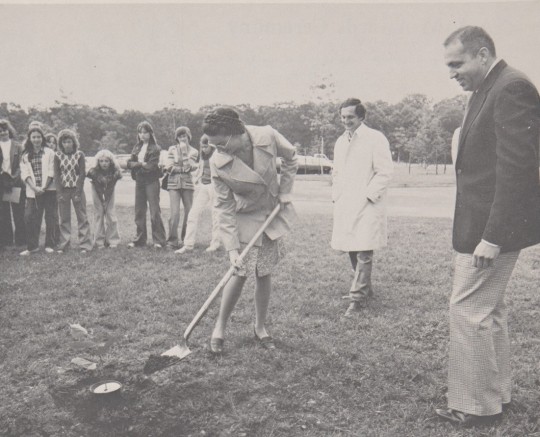
A self-described "Star Trek nerd," Barbara Scott's passion for space wasn't steered toward engineering by her guidance counselor. But that didn't stop her! Fueled by her love of math and computer science, she landed at Goddard Spaceflight Center in 1977. One of the first women working on flight software, Barbara's coding skills became instrumental on missions like the International Ultraviolet Explorer (IUE) and the Thermal Canister Experiment on the Space Shuttle's STS-3. For the final decade of her impressive career, Scott managed the flight software for the iconic Hubble Space Telescope, a testament to her dedication to space exploration.
Dr. Claire Parkinson: An Early Pioneer in Climate Science Whose Work is Still Saving Lives

Dr. Claire Parkinson's love of math blossomed into a passion for climate science. Inspired by the Moon landing, and the fight for civil rights, she pursued a graduate degree in climatology. In 1978, her talents landed her at Goddard, where she continued her research on sea ice modeling. But Parkinson's impact goes beyond theory. She began analyzing satellite data, leading to a groundbreaking discovery: a decline in Arctic sea ice coverage between 1973 and 1987. This critical finding caught the attention of Senator Al Gore, highlighting the urgency of climate change.
Parkinson's leadership extended beyond research. As Project Scientist for the Aqua satellite, she championed making its data freely available. This real-time information has benefitted countless projects, from wildfire management to weather forecasting, even aiding in monitoring the COVID-19 pandemic. Parkinson's dedication to understanding sea ice patterns and the impact of climate change continues to be a valuable resource for our planet.
Make sure to follow us on Tumblr for your regular dose of space!
#NASA#space#tech#technology#womens history month#women in STEM#math#climate science#computer science
2K notes
·
View notes
Note
NOT asking this as a gotcha, I'm 100% sincere, can you point to pieces of AI art that you feel are interesting uses of the medium? Because I'm not philosophically opposed to it, but at the same time I've never seen anything that wasn't naked bandwagon shilling by the same people who pushed NFTs
sure! i think a classic of the medium is secret horses

(i sadly don't know who made it, but i've seen it around and fallen in love). this is everything AI art should be, imo, taking advantage of the liminal dreamlike quality of the medium and using titling and framing to say something about the piece that wouldn't exist if it was presented on its own. secret horses...
my favourite band, everything everything, released an album last year that made use of AI generation, both for the album's art and for small portions of the lyrics (interestingly, they've refused to say which lyrics are AI written and which are human written, which adds another layer of intrigue to me -- the only lyric that they've confirmed is AI generated is the title of 'software greatman', which forms the haunting, powerful chorus of the song that gets deconstructed into electronic incoherence. other highlights include the album art, part burning skyscape, part incomprehensible machine. what is the machine? is it a camera? a monitor? a train? does it matter?
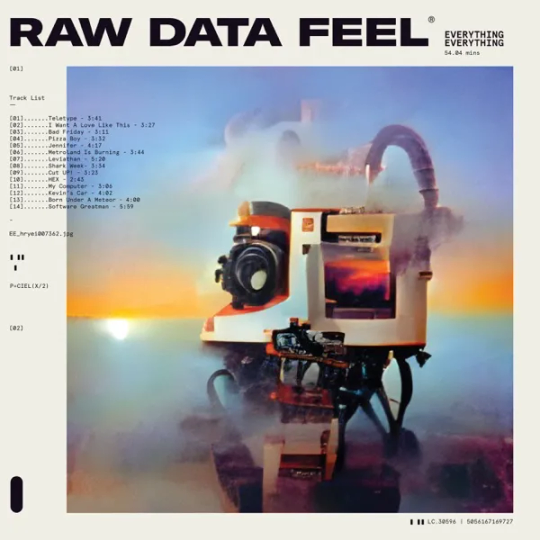
and finally from this album cycle i adore the hallucinogenic exuberance of their video for i want a love like this:
youtube
in terms of dedicated artists working primarily within the AI medium, i'm a huge fan of @reachartwork, a really innovative artist who keeps blowing me away with evocative and interesting pieces and pioneer in ethical and cooperative AI art techniques. i'm an especially big fan of their grotesque and uncomfortable 'tooth machine' series:


as well as their desolate, bleak, alien landscapes:


(hole in the sky / river lethe )
and their project, the @infiniteartmachine, a model that produces art based upon algorithmically generated prompots -- effectively a long-term art piece.
finally, i'm a very very big fan of @roborosewater-masters, a bot that makes AI-created magic the gathering cards. this might not parse as 'art' to some people, or be interesting to analyze as such, but to me, someone obsessed with games and game studies, i think that the mix of synctactically correct magic the gathering rules text and abrupt non sequitur makes for really striking and funny pieces that prompt me to think about what the limits of games and gaming are




these are just the artists and pieces i can name off the top of my head, but i hope that they're representative of what generative art has to offer when it's not being done by grifters chasing the lowest common denominator.
2K notes
·
View notes
Note
Cactus fascinates me, does it run on code similar to an existing instruction set or is it completely original on that front?
What can you do with it? What's it's storage?
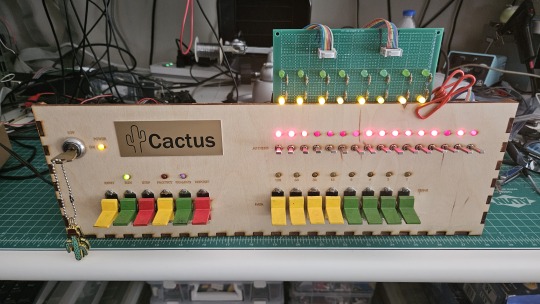
Both the Cactus (the original wooden prototype from years ago) and the new PCB Cactus(es) are essentially derived from a minimal 6502 computer design by Grant Searle for their core logic. Here's what that would look like on a breadboard:
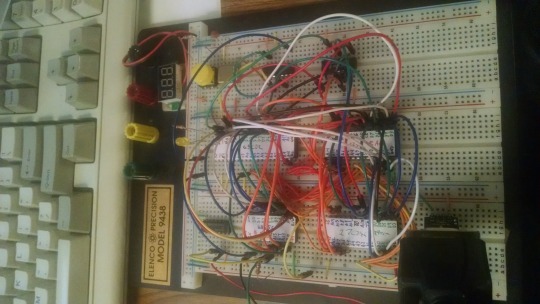
There isn't much to it, it's 32K of RAM, 16K of ROM containing Ohio Scientific's version of Microsoft BASIC, a 6850 ACIA for serial interaction, some logic gates, and of course a 6502 microprocessor (NMOS or CMOS, doesn't matter which). You hook it into a terminal and away you go.
Grant's design in turn can be best described as a distilled, modernized version of the OSI Challenger series of computers. Here's an OSI-400 and a Challenger 4P respectively:
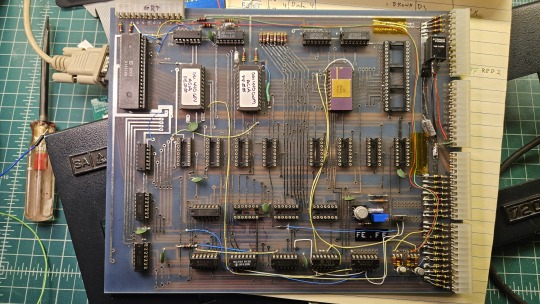

The left one is a replica of the 400 circa 1976, also called the Superboard. It was affordable, endlessly reconfigurable and hackable, but ultimately very limited in capabilities. No BASIC, minimal monitor ROM you talk to over serial, but you could connect it to a bus to augment its features and turn it into a more powerful computer.
Whereas the OSI C4P on the right from about 1979 has more RAM, a video card, keyboard, BASIC built in, serial interface, cassette tape storage, and that's just the standard configuration. There was more room to expand and augment it to your needs inside the chassis (alot changed in 3 years for home computer users).
Grant's minimal 6502 design running OSI BASIC is a good starter project for hobbyists. I learned about the 6502's memory map decoding from his design. I modified and implemented his design on a separate cards that could connect to a larger backplane.
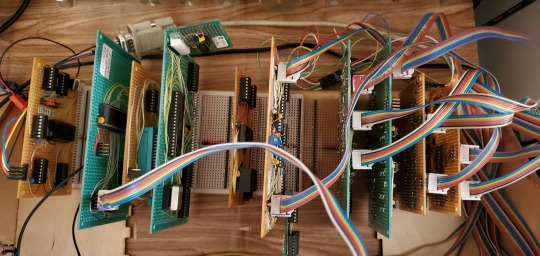
Here are the serial, ROM, RAM, and CPU cards respectively:
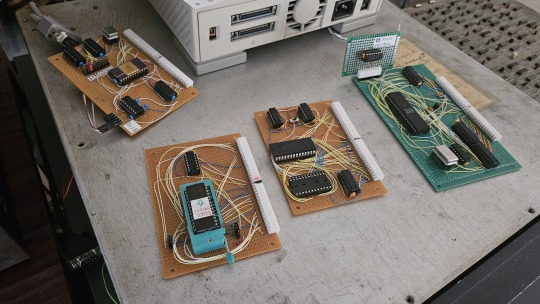
Each one is 100% custom, containing many modifications and fixes as I developed the design. However, that's only half of the computer.
I really wanted a 6502 machine with a front panel. People told me "nobody did that", or couldn't think of examples from the 1970s but that seemed really strange to me. Especially since I had evidence to the contrary in the form of the OSI-300:
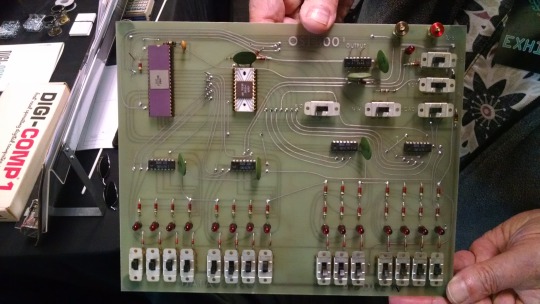
This one I saw at VCF West back in 2018 illustrates just how limited of a design it is. 128 bytes of RAM, no ROM, no serial -- just you, the CPU, and toggle switches and LEDs to learn the CPU. I was inspired the first time I saw one in 2015 at VCF East, which is probably when this whole project got set in motion.
Later that year I bought a kit for a miniature replica OSI-300 made by Christopher Bachman, and learned really quickly how limited the design philosophy for this particular front panel was. It was a major pain in the ass to use (to be clear, that's by OSI's choice, not any fault of Christopher in his implementation)

So... I designed my own. Took awhile, but that's the core of what the Cactus is: my attempt at experiencing the 1970s homebrew scene by building the computer I would have wanted at the time. Over half of the logic in the Cactus is just to run the front panel's state machine, so you can examine and modify the contents of memory without bothering the 6502. I added in all of the things I liked from more advanced front panels I had encountered, and designed it to my liking.
Here's the original front panel, accompanying logic, and backplane connected to the modern single board computer (SBC) version of the machine:
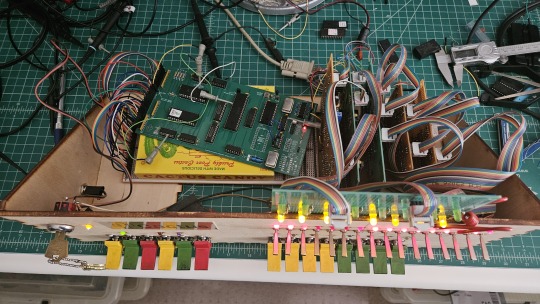
And here's the new Cactus SBC working with the new front panel PCB, which combines the logic, physical switch mountings, and cabling harnesses into a single printed circuit board.
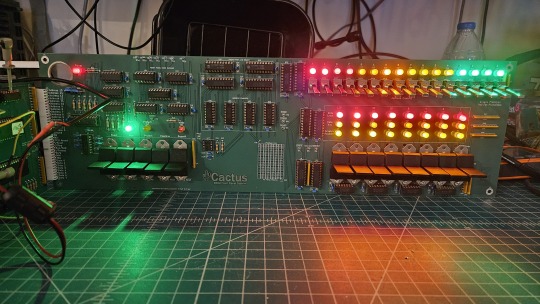
So, what can you do with it? Pretty much the same things I do already with other contemporary 1970s computers: play around in BASIC, fire up the occasional game, and tinker with it.
I've got no permanent storage designed for the Cactus as yet, it's been one of those "eventually" things. The good news is that a variety of software can be ported to the hardware without too much trouble for an experienced hobbyist. A friend of mine wrote a game called ZNEK in 6502 assembly which runs from a terminal:
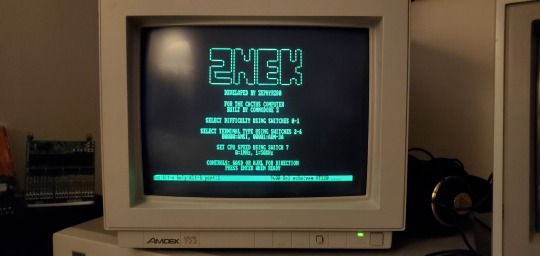
Right now, you have to either toggle in machine programs from the front panel from scratch, burn a custom ROM, or connect it to a serial terminal to gain access to its more advanced features:

Here's it booted into OSI BASIC, but I have also added in a modern descendant of Steve Wozniak's WOZMON software for when I need to do lower level debugging.
I've also got a video card now, based on the OSI-440. I have yet to implement a keyboard, or modify BASIC to use the video board instead of the serial connection. Even if I did, screen resolution is pretty limited at 24x24 characters on screen at once. Still, I'm working on that...
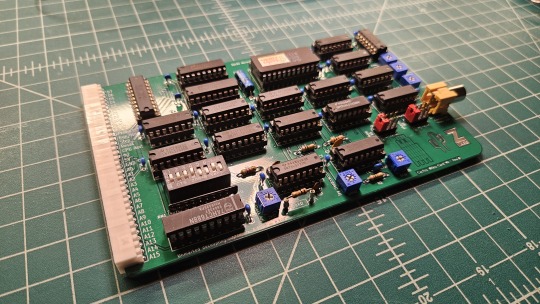

Anyway, I hope that answers your question. Check the tags below to see the whole process stretching back to 2017 if you're curious to learn more of the project's history. I'm also happy to answer any more questions you might have about the project.
267 notes
·
View notes